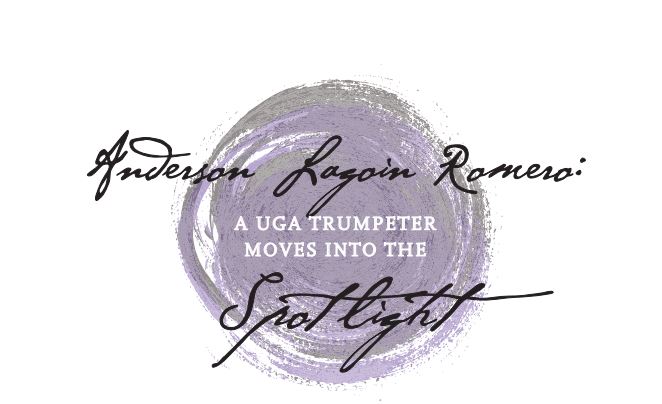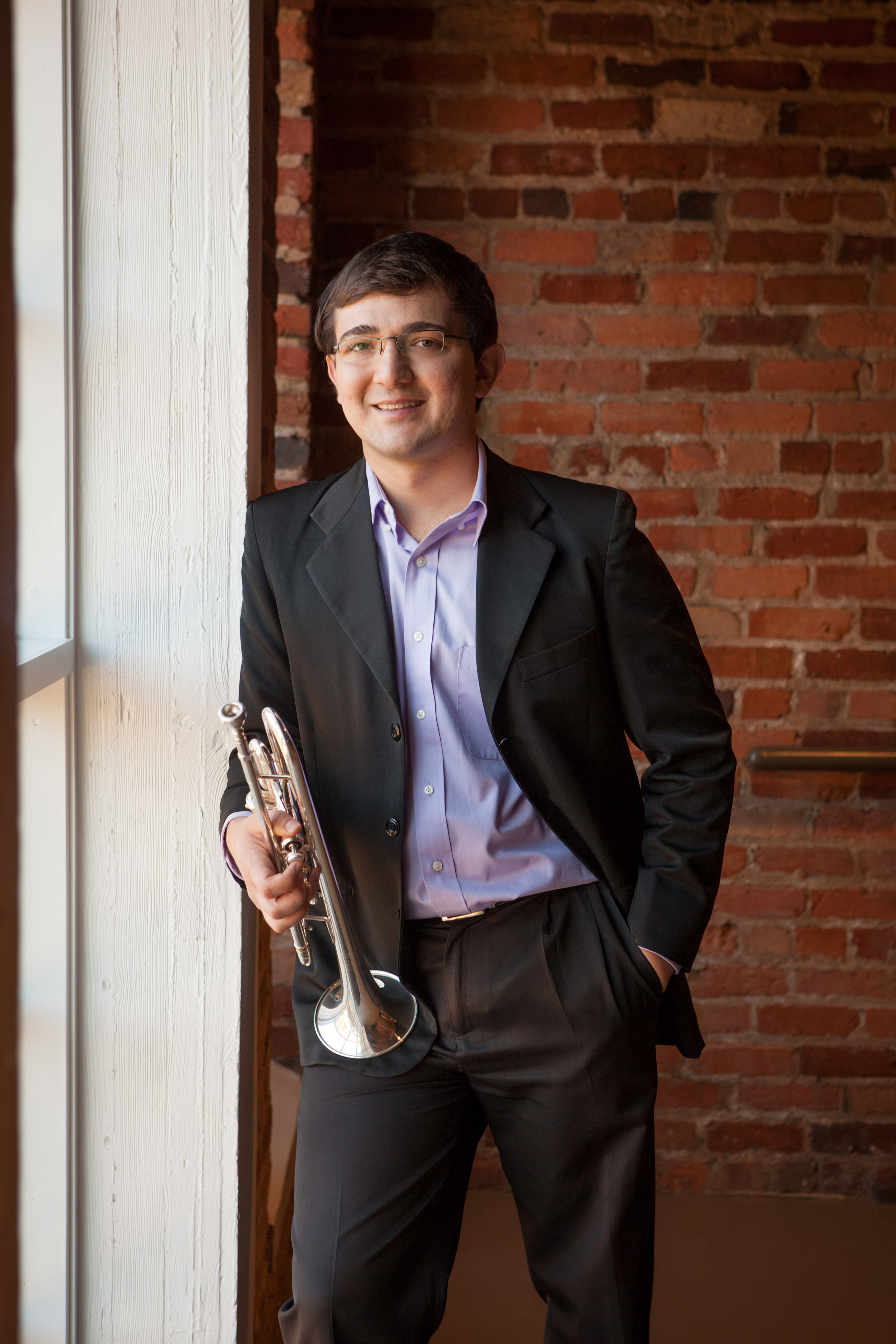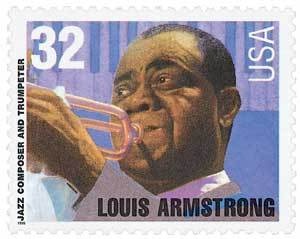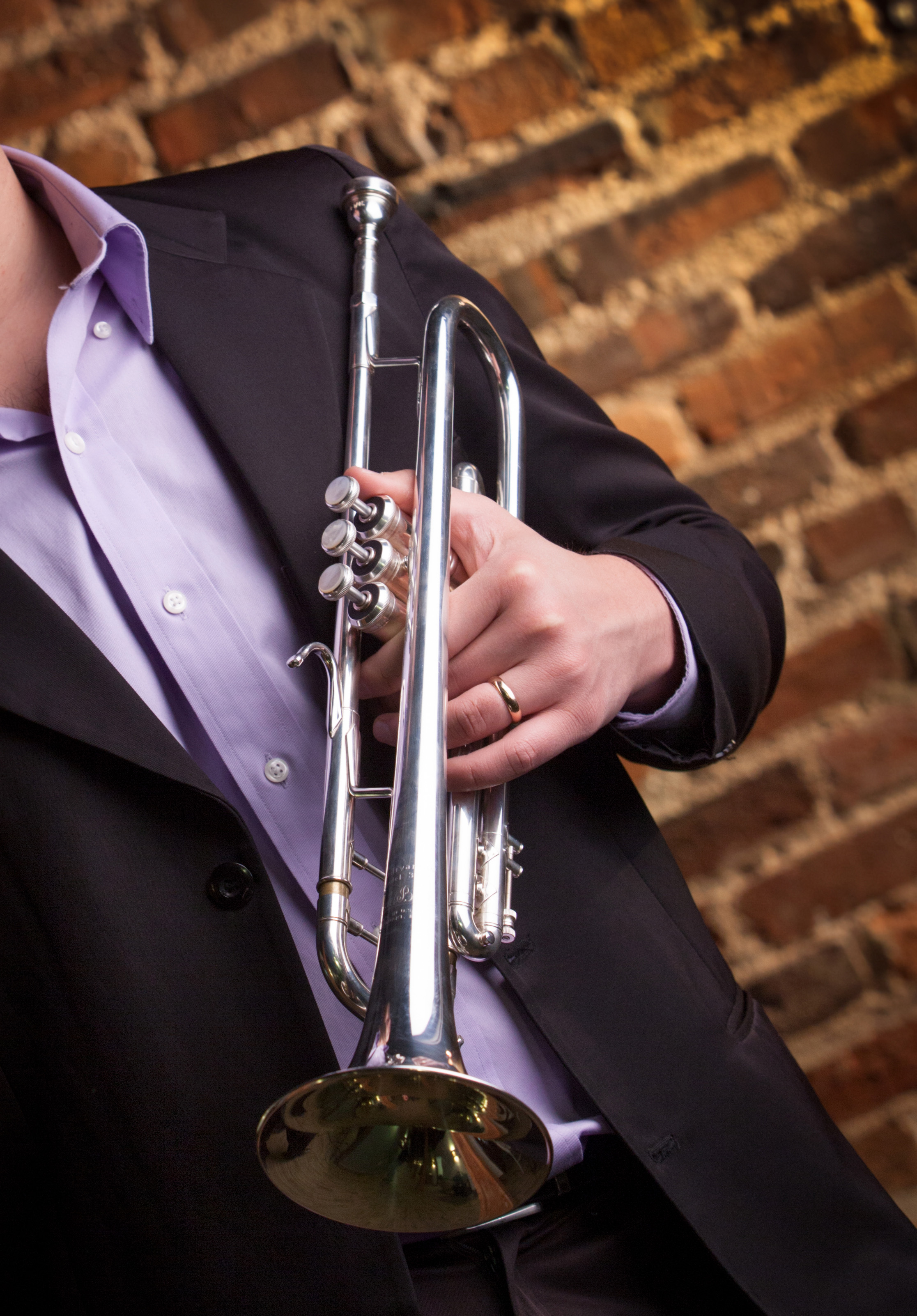Anderson Lagoin Romero: A UGA Trumpeter Moves into the Spotlight

By: Cythnia Adams | Photos by: Nancy Evelyn
Anderson Lagoin Romero, a doctoral student in the Hugh Hodgson School of Music, took the stage in the Concerto Competition Winner’s Concert late February 2013 at the Hugh Hodgson Concert Hall. When the musician stood beneath the stage lights, he was far from his physical home. Yet Romero’s second home is on stage, at home there since an early age. The accomplished artist began his performance life as an 11-year-old living in São Paulo, Brazil. “I did not come from a musical family, but one of my older brothers, André Romero, started to play the trumpet two years before me. He was my inspiration to start learning music,” the trumpeter explains.

Anderson Romero, PhD trumpet performance
Since childhood, he has played with the São Paulo Youth Symphonic Band, the University of São Paulo (USP) Chamber Orchestra, and the USP Brass Quintet. He has since played throughout Europe and the United States.
“My first music teacher was Horácio dos Santos Júnior,” he recalls. “I started my undergraduate studies in Brazil in 2004 at the University of São Paulo. After finishing my undergrad I won an audition to play with the Conservatory of Tatui Symphony Orchestra (in Brazil).” Romero toured Italy and Switzerland playing Brazilian music with the USP Brass Quintet, and became the principal trumpet for the Conservatory during the 2009 season.
Romero left the conservatory when he won a scholarship from The University of Southern Mississippi. After completing preliminary English studies there he began graduate studies in trumpet performance and became a teaching assistant. He won the University of Southern Mississippi Wind Ensemble Concerto Competition in 2010, and was selected as a finalist in the USM Trumpet Ensemble during the 2011 National Trumpet Competition. He was named a semi-finalist in the solo division in 2012.
And what outcome for that winter’s night a year ago? Romero was named the winner of the 2012 UGA Concerto Competition, which was actually held on February 28, 2013.
This past summer, he joined UGA’s Wind Ensemble in a European tour. He is also a member of the Bulldog Brass Quintet.
“I always had the dream to study in the United States,” says Romero. “I am very happy at UGA and I really enjoy all the opportunities I am having in here. My main focus is trumpet performance. I really love playing and teaching music.”
He is excited by the fact that Georgia benefits from the best in his profession.
“UGA recently hired one of the best orchestral trumpet players in the world, Philip Smith,” says Romero. “He will be teaching in the UGA trumpet studio alongside professor Brandon Craswell. Mr. Smith will join the UGA faculty in the fall of 2014.”
According to The New York Times, Smith recently retired as the New York Philharmonic’s principal trumpet after being a member of the orchestra for 36 years. He will leave his post to join the faculty of the Hugh Hodgson School of Music, well before Romero completes his doctoral studies.
Currently a second-year doctoral student, Romero plans to graduate in May of 2015. Afterward, he intends to join a symphony orchestra or teach at college level.

Credit: Catwalker/Shutterstock.com
A Few Famous Trumpeters
An abbreviated list of renowned trumpet players includes: Louis Armstrong, Bud Brisbois, Chet Baker, Chris Botti, Miles Davis, Roy Eldridge, Dizzy Gillespie, Tom Harrell, Adolph Herseth, Freddie Hubbard, Roger Ingram, Harry James, Wynton Marsalis, Blue Mitchell, Lee Morgan, Fats Navarro, Doc Severinsen, and Woody Shaw.
Early Trumpets
The earliest trumpets date back to 1500 BC and earlier. The bronze and silver trumpets from Tutankhamun’s grave in Egypt, bronze lurs from Scandinavia, and metal trumpets from China date back to this period. Trumpets from the Oxus civilization (3rd millennium BC) of Central Asia have decorated swellings in the middle, yet are made out of one sheet of metal, which is considered a technical wonder. The Moche people of ancient Peru depicted trumpets in their art going back to 300 AD. The earliest trumpets were signaling instruments used for military or religious purposes, rather than music in the modern sense; and the modern bugle continues this signaling tradition.
In medieval times, trumpet playing was a guarded craft, its instruction occurring only within highly selective guilds. The trumpet players were often among the most heavily guarded members of a troop, as they were relied upon to relay instructions to other sections of the army.

Anderson Romero, PhD trumpet performance








